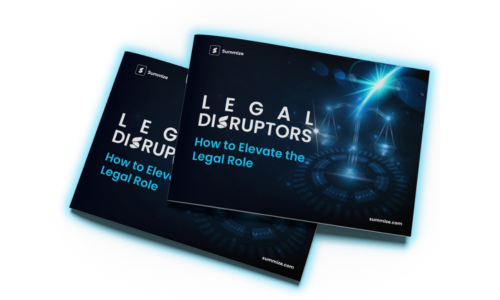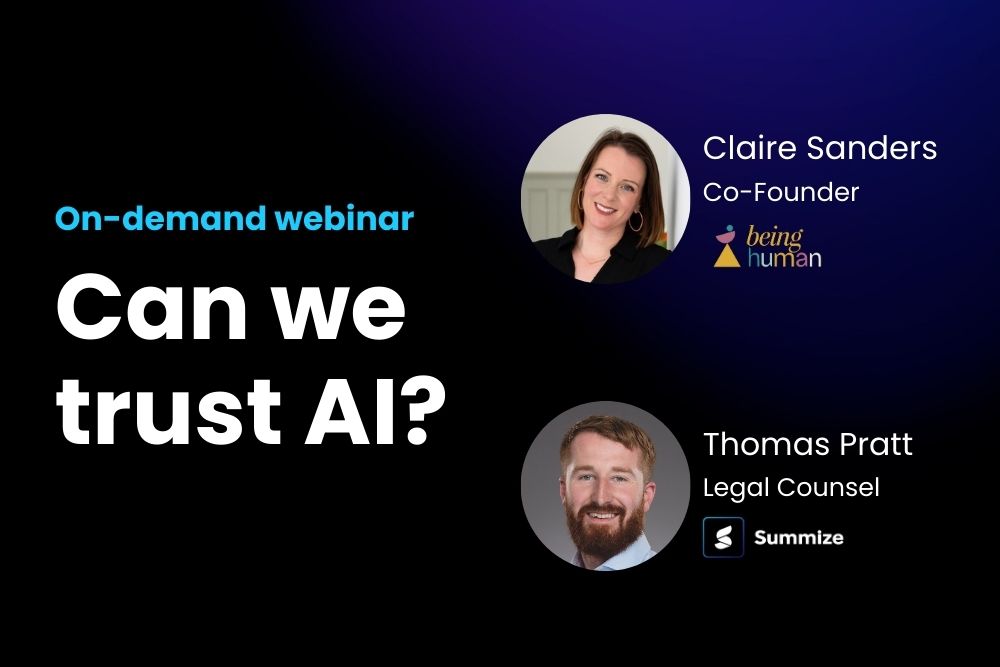All about enterprise legal management
Enterprise Legal management is the process, strategy and the use of technology used within enterprise legal operations to streamline and improve legal workflows.
March 17, 2023
November 25, 2025
Enterprise Legal Management (ELM) is a growing priority for in-house legal teams. In fact, research by Thomas Reuters indicates that 71% of legal teams see technology that simplifies their workflows as a high priority.
Research by Bryters predicts that legal tech budgets will grow by 200% by 2025, so ELM tools are likely to become more common. So, to understand how ELM has developed over time and identify what software is right for you, let’s first define enterprise legal management and how it can help in-house legal departments.
What is enterprise legal management (ELM)
Enterprise Legal Management (ELM) is the process and strategy behind corporate legal departments. It has continuously evolved and adapted since the 90s but became prominent with the demand to bring increased accountability, efficiency, and transparency to legal processes. After the technological advancements and digital transformation of the 21st century, it can also refer to the range of technologies used within enterprise legal operations.
One of the easiest ways to think about ELM is to consider the types of work that in-house legal departments undertake or support. This can include matter management, e-billing, contract management, litigation, mergers, and acquisitions. Basically, anything that falls on the desk of the general counsel or head of legal (or your business's equivalent).
ELM software allows legal teams to execute this work while delivering valuable data, reports and analytics. It can drive efficiency and provide accurate reporting and analytics, enabling legal teams to make better-informed decisions.
Components of enterprise legal management
The role of in-house legal departments has evolved. Legal teams are facing increased board-level scrutiny, and their position now requires them to be proactive about compliance, governance, risk mitigation and opportunity generation. ELM can help with this.
The ELM category includes various tasks, notably matter management, legal spend management, contract lifecycle management, reporting, and analytics. Although the tasks differ, ELM software is often sold as a single solution or many product offerings designed to achieve efficiencies in different areas.
Legal spend management
Any in-house legal team must know what has been spent and where. But with businesses tightening their financial policies, they must now adhere strictly to their budgets and create comprehensive financial reports and data-led strategies.
Legal spend management, also known as legal e-billing, is the process of reviewing, tracking, analyzing, and reporting on in-house and external legal costs, primarily associated with outside counsel expenses. Implemented in legal departments, legal e-billing utilizes modern software to digitalize legal spending to improve efficiency and identify opportunities for cost reductions.
Leading software uses artificial intelligence (AI) to automate and accelerate tasks to reduce costs and save time. For example, automating invoice workflows allows teams to enforce their company billing guidelines and reject unauthorized expense claims.
Benefits of legal spend management software include:
- Accurate reporting and forecasting
- Administering spending controls
- Improved productivity
- Improved visibility into spending and audit trails
- Enhanced workflows and processes
Matter management
A familiar term in the legal industry, legal matter management (or matter management) is the process of managing all internal aspects of a corporate legal department, including research, compliance litigation, contracts, IP and claims. It helps in-house legal teams optimize their legal service delivery.
Businesses and legal teams can prioritize, allocate and track their work by starting legal affairs as an internal matter, allowing them to assign work that an external counsel would traditionally handle.
Initially, the process involved managing all activities, including strategies involved with external counsel engagement and e-billing. But businesses began to demand more transparency and efficiency, which led to the development of matter management software.
Like CRM software for sales and marketing teams, matter management software helps legal teams create a single source of truth for all relevant legal activities and processes. It is one of the most versatile solutions for legal teams, and its features are designed to deliver value across various tasks and processes.
Benefits of legal spend management software include:
- Greater accuracy
- Mitigated risk
- Enhanced collaboration
- A standardized approach to processes
Contract lifecycle management
Contract Lifecycle Management (CLM) is when a contract is digitally managed through every step of the contract lifecycle, from pre-signature to post-signature. The end-to-end process aims to digitalize, simplify, and automate a business’ contracting processes, helping legal teams and commercial users improve efficiency while mitigating risk.
But CLM tech has expanded from its initial scope of contract authoring and legal department utilization. Now, the tools sit at the center of the business, connecting core systems, integrating with critical structures, and informing business decisions.
An integrated solution like Summize uses Teams, Word, and Slack as the primary user interface to maximize adoption and utilisation. By centralizing contacts through familiar tools, non-legal users can create contracts using an intuitive Q&A chatbot controlled by the legal department.
Benefits of the integrated CLM:
- Mitigated risk
- Faster revenue generation
- Streamlined workflows
- Improved cross-department collaboration
- Increased legal ops efficiency
- Improved contract transparency and compliance

Reporting and analytics
As well as managing matters, controlling spend and managing contracts throughout their lifecycle, legal teams must report on their progress and analyze their approach. It's an essential process for an effective ELM strategy. If legal teams don’t have access the suitable reporting tools, they risk being unable to drive value and strategic insight.
As the ELM software landscape has evolved, legal teams have been able to gain more profound insights into their everyday processes and tasks, enabling them to spot inefficiencies and opportunities and make better-informed business decisions. More and more legal professionals see the benefits of investing in and utilizing software that drives their analytical strategy, and they are driving competitive advantages for their businesses.
An integrated tool like Summize unlocks essential contractual information, allowing legal teams to make better-informed decisions, control risk and spot opportunities across the business. It can be used to compare contract benchmarks and KPIs easily and identify areas for improvement in digital contracting processes.
Benefits of the legal ops reporting:
- Mitigated risk
- Faster revenue generation
- Increased legal ops efficiency
- Enhanced transparency
- Cost savings
The technology market is full of vendors offering different pieces of software that can help businesses increase efficiency, reduce costs, improve cross-department collaboration, and deliver more accurate reporting and insights. But every business is unique, and only some off-the-shelf solutions will provide a benefit. Companies should evaluate their processes, use cases and the market to develop an ELM strategy unique to them. This will enable flexibility across every department with a solution that grows as your business does.
Finding the right Enterprise Legal Management Solution
Legal technology can be overwhelming. The landscape is full of vendors pitching their solution as ‘the most powerful’, but no software will solve every business problem.
For in-house legal teams, e-billing, matter management and contract lifecycle management are the foundation for legal teams looking to undergo digital transformation. And they will typically be the first solutions implemented. They quickly deliver helpful and valuable reports to aid decision-making.
But the most crucial factor in the process is that your chosen ELM solutions can grow and adapt so that they can continue to support your business. Business leaders ought to use ELM solutions that meet the current and future needs of the company. Focus on the pain points that will allow you to make a significant impact on your legal department by increasing efficiency, automating high-volume work, and driving cost savings.
Discover even more!
Explore more about contracting and CLM in our ultimate contract guides








